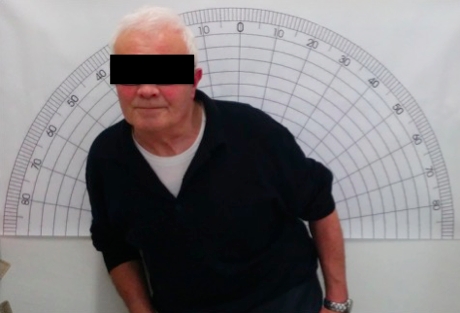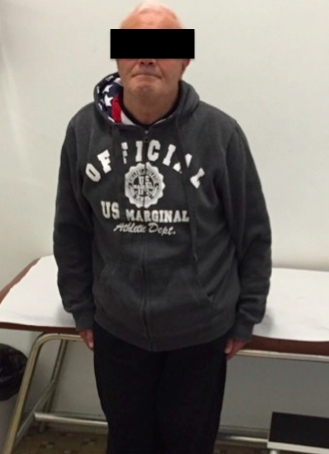Session Information
Date: Monday, June 20, 2016
Session Title: Surgical therapy: Parkinson's disease
Session Time: 12:30pm-2:00pm
Location: Exhibit Hall located in Hall B, Level 2
Objective: To report the case of a 67-year-old Parkinsonian patient with significant and disabling Pisa syndrome (PS) successfully treated with subthalamic nucleus deep brain stimulation (STN-DBS).
Background: PS is a postural disorder defined as a sustained lateral bending of the trunk, associated with neurodegenerative diseases with basal ganglia involvement, such as Parkinson’s disease (PD). To date, no specific therapeutic options are available and different approaches demonstrated only limited efficacy. The potential role of STN-DBS in relieving PS associated with PD has not yet been determined and only few controversial data are reported.
Methods: A case of PS treated with STN-DBS is described, reporting therapies and clinical assessments.
Results: A 67-year-old man with a 5-year history of PD developed sub-acute right bending of the trunk (angle= 35 degrees) a few weeks after the administration of rasagiline. The rasagiline and pramipexole withdrawal was ineffective on PS. During the following 3 years, he developed motor fluctuations unresponsive to medical therapy optimization, and bilateral STN-DBS surgery was proposed. Preoperative Movement Disorder Society Unified Parkinson’s disease Rating Scale (MDS-UPDRS) part-III score was 55 in medication OFF-condition and 38 in medication ON-condition; therapy was carbidopa/levodopa 900 mg daily and clonazepam. After surgery the levodopa daily dose was lowered to 575 mg and the stimulation switched-on with the following parameter settings: 1.8 V, 60 μs, 130 Hz, contact 1-, (monopolar stimulation) for the left STN; 2.0 V, 60 μs, 130 Hz, contact 9- (monopolar stimulation), for the right STN. Early after the stimulation activation an improvement of the PS was achieved, contributing to a relevant improvement of the patient’s quality of life. The 1-year follow-up assessment showed a sensible amelioration of the MDS-UPDRS-III score (47/22 in Stimulation ON- and medication OFF-/ON-condition) and of the right bending of the trunk (angle= 10 degrees).
The rasagiline and pramipexole withdrawal was ineffective on PS. During the following 3 years, he developed motor fluctuations unresponsive to medical therapy optimization, and bilateral STN-DBS surgery was proposed. Preoperative Movement Disorder Society Unified Parkinson’s disease Rating Scale (MDS-UPDRS) part-III score was 55 in medication OFF-condition and 38 in medication ON-condition; therapy was carbidopa/levodopa 900 mg daily and clonazepam. After surgery the levodopa daily dose was lowered to 575 mg and the stimulation switched-on with the following parameter settings: 1.8 V, 60 μs, 130 Hz, contact 1-, (monopolar stimulation) for the left STN; 2.0 V, 60 μs, 130 Hz, contact 9- (monopolar stimulation), for the right STN. Early after the stimulation activation an improvement of the PS was achieved, contributing to a relevant improvement of the patient’s quality of life. The 1-year follow-up assessment showed a sensible amelioration of the MDS-UPDRS-III score (47/22 in Stimulation ON- and medication OFF-/ON-condition) and of the right bending of the trunk (angle= 10 degrees).
Conclusions: PS is usually poorly responsive to levodopa or other oral therapies. Recently, few cases of DBS in PD patients with PS were reported in literature, with encouraging results. Here, we report a new case of remarkable lateral bending of the trunk successfully relieved by STN-DBS, suggesting that the surgical option could be taken into account in selected PD patients with disabling postural abnormalities.
To cite this abstract in AMA style:
C.A. Artusi, A. Romagnolo, M. Zibetti, M.G. Rizzone, A. Merola, F. Dematteis, M. Lanotte, L. Lopiano. Pisa syndrome in Parkinson’s disease effectively treated with subthalmic deep brain stimulation: Case report [abstract]. Mov Disord. 2016; 31 (suppl 2). https://www.mdsabstracts.org/abstract/pisa-syndrome-in-parkinsons-disease-effectively-treated-with-subthalmic-deep-brain-stimulation-case-report/. Accessed December 25, 2025.« Back to 2016 International Congress
MDS Abstracts - https://www.mdsabstracts.org/abstract/pisa-syndrome-in-parkinsons-disease-effectively-treated-with-subthalmic-deep-brain-stimulation-case-report/
